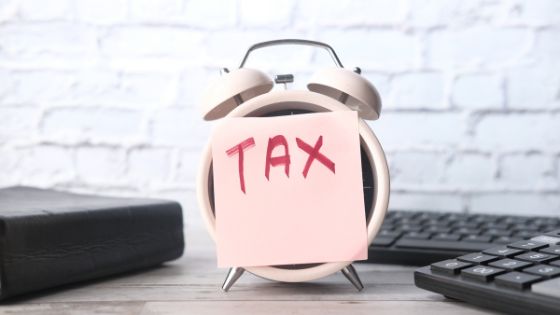
How to reduce taxable income this year! Top 7 tax-saving strategies!
Posted on |
How to reduce taxable income and save money? Here are the top 7 tax-saving strategies!
You can use the Table of Contents below
- How can I reduce my taxable personal income this year?
- Take advantage of the salary sacrifice or Salary packaging
- Contribute the maximum amount to the retirement account
- Invest in investment Bonds or Insurance Bonds
- Claim deduction on the Investment property
How can I reduce my taxable personal income this year?
Let’s find intelligent ways to reduce taxable income and save more money.
Everyone pays taxes, No big deal! You’ll inevitably pay taxes. However, everyone likes to look for ways to minimise their taxes. Let’s explore clever ways to minimise the tax burden beyond tax cuts and concessions. The fun fact is that good tax planning is an investment strategy that contributes to good financial health.
Tax-saving strategy # 1: Take advantage of the salary sacrifice or Salary packaging
Employee can reduce their tax brackets by using salary packaging or salary sacrificing to forgoing a part of their pre-tax pay.
You can take advantage of salary sacrifice arrangements by buying the benefits in pre-tax dollars if your employer pays the FBT (Fringe benefits tax). There are several ways you can make this arrangement with your employer. The most common & popular salary packaging Items to reduce your taxable income are:-
Superannuation contributions
Contributing extra through salary sacrifices into your super fund will boost your retirement fund and save you in tax because your super will tax these contributions at 15%- the same as your employer. This equates to a lower marginal tax rate than pre-tax income for most people.
Car fringe benefits
One of the most popular options is to salary package a car. For example, say you are making $100,000 per year and want to purchase a vehicle for work worth $30,000; with a salary sacrifice arraignment, your company can deduct the $30,000 from your salary before taxes, reducing your taxable income. Hence you end up in the lower tax bracket with a $70,000 income and a tax-free car.
The tax saving from fringe benefits is considerable. A fringe benefit can save you thousands on tax by sacrificing income or combing salaries. However, the possibility of fringe benefits tax (FBT) may affect the type of benefits your workplace offer.
Tax-Saving Strategy #2: Claim your all-applicable work-related deduction
The deductions can help you reduce your taxable income. You can only claim all eligible work-related deductions. Once you have determined what deductions are available, claim these to minimise your taxable income. You can still deduct purchases used for personal and business if you count only the work-related portion of the purchase.
List of expenses you can include –
– Home office expenses.
– Industry-specific training, Books
– work-related travel expenses include meals, accommodations and petrol costs. (Check what you can & claim and what you cannot)
– Laptop or Desktop
– phone bills
Please check the threshold before claiming because the tax office flags unusual high work-related claims. If unsure, please check the ATO website or consult the tax adviser. Make sure you have all receipts as a record of the purchase in place.
Tax-saving strategy # 3: A charitable donation
A charitable donation is a clever & intelligent way to offset your tax burden. Donating money is one way you can save on taxes. But you aren’t limited to a cash donation. Clothing or household goods are eligible for deductions and used as a medium to offset capital gains.
Please note that tax refunds do not include donations subtracted from your taxable income. Instead, the percentage of your contributions is given back to you on your tax return.
Tax-saving strategy # 4: Private health insurance
To maximise your refund, use Medicare levy surcharge and private health insurance. If you earn $90K (Single) or 180k (families) and have not yet had private insurance, it’s time to take one. If you do not have private insurance, you will end up paying an extra 1% Medicare levy surcharge on top of a mandatory 2% Medicare levy. Getting private health insurance is a smart way to keep your taxable income low.
Tax-saving strategy # 5: Contribute the maximum amount to the retirement account
contributing to the maximum amount to the retriment account is a smart way to keep your taxable income low. The good news is, Taxpayers of all incomes can benefit from Tax minimisation strategies such as maxing out their retirement fund or contributing a portion of their earnings.
Tax-saving strategy # 6: Invest in investment Bonds or Insurance Bonds
A government-backed investment bond is a type of life insurance policy combined with managed fund characteristics. They are available through a variety of insurance companies and building societies. These bonds are a tax-sheltered investment that can be used as an investment strategy to build wealth.
You can further take advice from a qualified financial adviser to know the suitability of these bonds to your circumstances.
Tax-saving strategy # 7: Claim deduction on the Investment property
There are various ways to claim tax duction on the investment property as a landlord and reduce your tax bill. Please find our blog post on the topic for more information- “Ways to Reduce Tax on your Investment Property“


